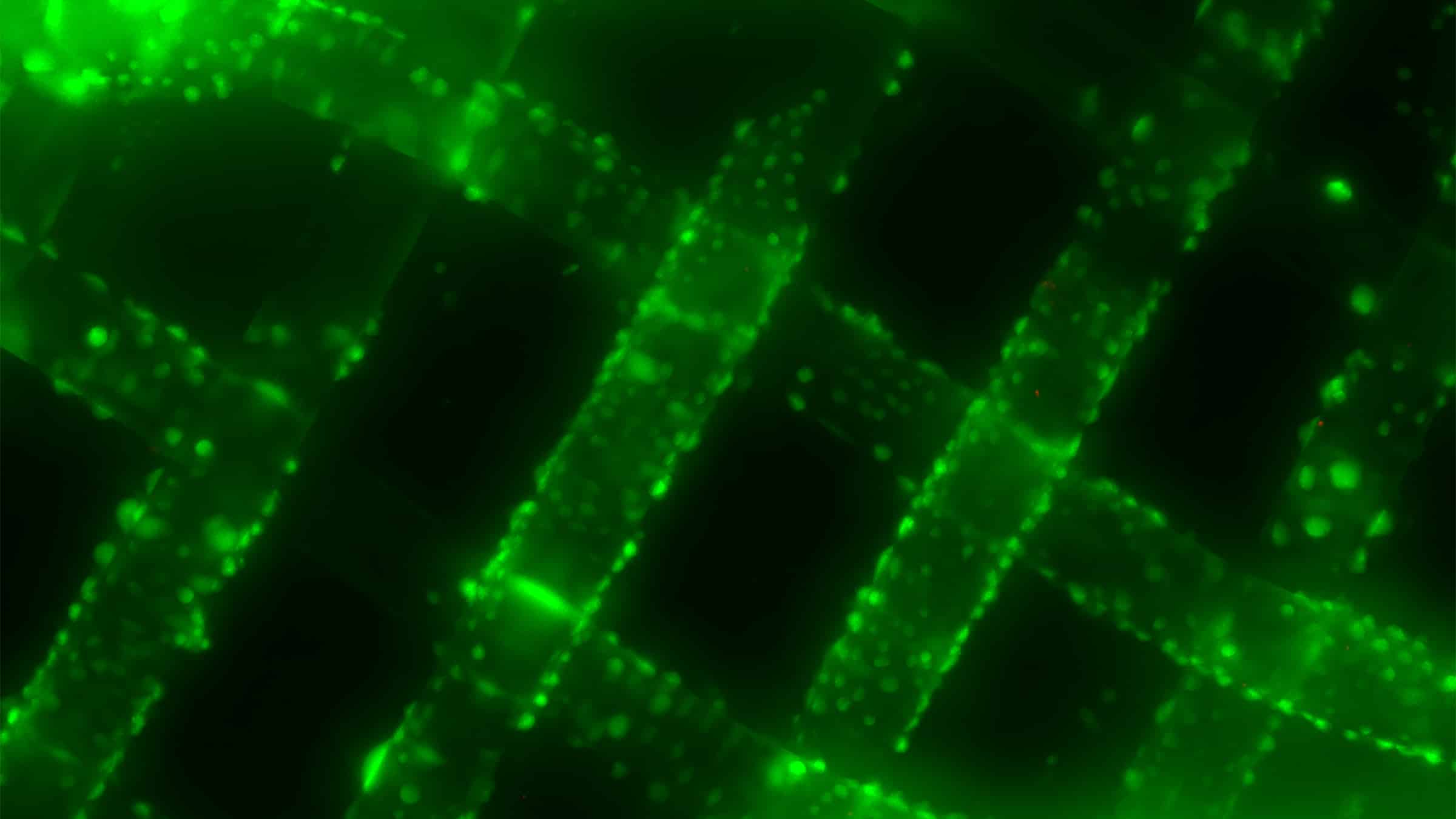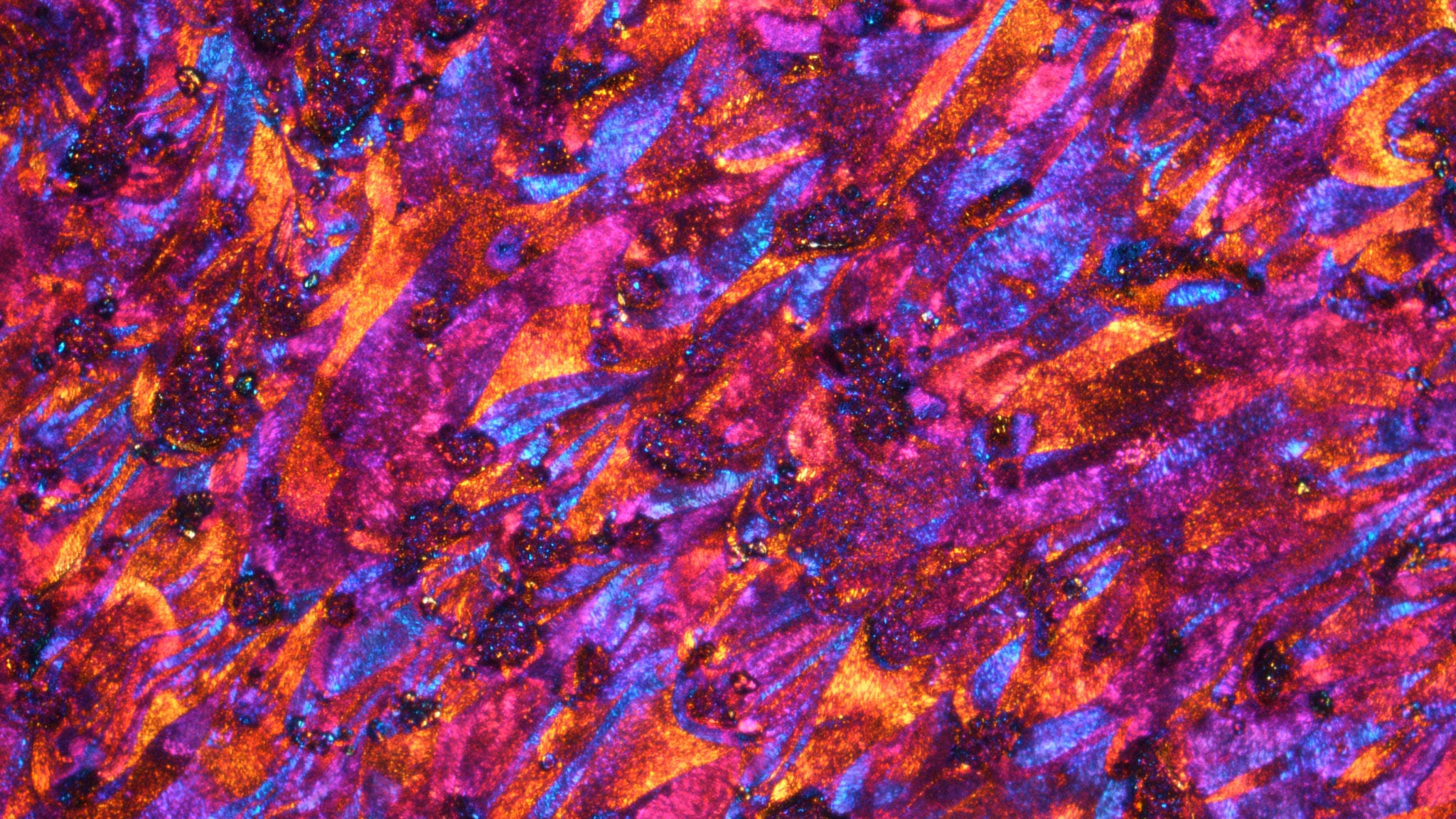Textiles Researchers Prepare Stem Cells to Become Organ Tissue

Nearly 3,000 people died waiting for an organ transplant in 2022, according to the Organ Procurement and Transplantation Network, and more than 100,000 people remain on the waitlist. Envisioning a future without the need for donor organs, an NC State researcher is laying the foundation to grow stem cells into replacement organ tissue.
Jessica M. Gluck, an assistant professor of textile engineering, chemistry and science in the Wilson College of Textiles, studies microenvironments in the human body. These microenvironments foster cell growth and activity, and they have different physical and mechanical properties depending on where in the body they are.
Gluck’s lab experiments with nanofibrous materials to create scaffolding that can transfer stem cells into the body. Cells taken from an individual can be essentially reprogrammed into embryonic-like stem cells. The stem cells are pluripotent, so they can regenerate into any cell in the body. Gluck and her team alter the nanofibrous scaffolding’s properties to mimic certain microenvironments, which in turn encourages the stem cells to become a specific type of cell or grow into a specific tissue.
The basic science research occurring in Gluck’s lab will bolster future applied research focused on repairing and growing organs: Understanding the nuances of cell development will help researchers learn how to prevent disease and to create new tissue.
“We wouldn’t need donor organs or donor tissue. People wouldn’t need to worry about their bodies rejecting transplanted organs,” Gluck said. “We’re still a long way from that reality, but I think in the next 20 years, we’ll start to see this process becoming more feasible in personalized medicine.”
On the surface, textiles sound like socks and towels. When you’re looking at the industry as a whole, you’re looking at things made out of polymers, which is pretty much everything.
Gluck and her team experiment in creating scaffolding that specifically mimics microenvironments in the heart and the cornea. The research involves a mix of textiles, biomedical engineering, medicine and mechanical engineering. Gluck has worked alongside the Department of Electrical and Computer Engineering and the Joint Department of Biomedical Engineering to study electrical currents in cardiac cells. Gluck is also part of the Comparative Medicine Institute, which fosters interdisciplinary research and scientific discovery to improve human and animal health. A multidisciplinary approach is vital to the lab.
Suh Hee Cook, a Ph.D. candidate in the Fiber and Polymer Science program, had studied biomedical engineering before joining the Wilson College of Textiles. They planned on earning a Ph.D. in biomedical engineering before they learned Gluck was researching cardiac tissue. Now, they study how pluripotent stem cells can become cardiac myocytes.
“We’ve gotten to the point where the stem cells beat like cardiac myocytes, but they don’t beat as strongly or as synchronized as an actual myocyte,” Cook said. “We’re interested in conductive materials, since a heartbeat is an electrical thing. As we’re fabricating the material, we want to see how cells respond to it and if they’re beating better.”
Gluck’s team experiments with the nanofibrous scaffolding’s mechanical and physical properties, changing things like protein levels, elasticity and conductivity, to create a stable microenvironment that’s similar to those found in certain organs. Nasif Mahmood, also a Ph.D. candidate in the Fiber and Polymer Science program, is studying ocular surface repair and creating scaffolding similar to corneal tissue. The material must be transparent so it doesn’t block vision, and it must support cell growth.
Mahmood has studied textiles and consumer science. He didn’t originally plan on joining the biomedical field, but he was fascinated by Gluck’s work with pluripotent stem cells.
“I never would have imagined I’d be here doing this kind of research,” Mahmood said. “I never enjoyed biology that much. My background is in textiles. As a textiles college, there are a lot of fascinating things in our labs.”


“On the surface, textiles sound like socks and towels,” Gluck said. “When you’re looking at the industry as a whole, you’re looking at things made out of polymers, which is pretty much everything. You’re looking at dyeing textiles. The industry is insanely multidisciplinary.”
This work is just the beginning of life-saving research.
“When I take a step back, I think, ‘This is kind of insane, watching stem cells turn into heart tissue and beat in a dish,’” Cook said. “The process of scientific discovery is very rewarding to me — to uncover a piece of knowledge and share it with scientists. We’re doing this small part of pushing our field forward, and we’re contributing this piece of knowledge that could revolutionize the medical field and save a lot of people’s lives.”



